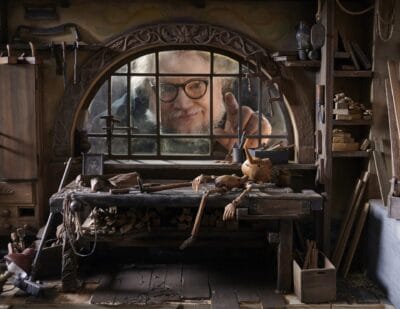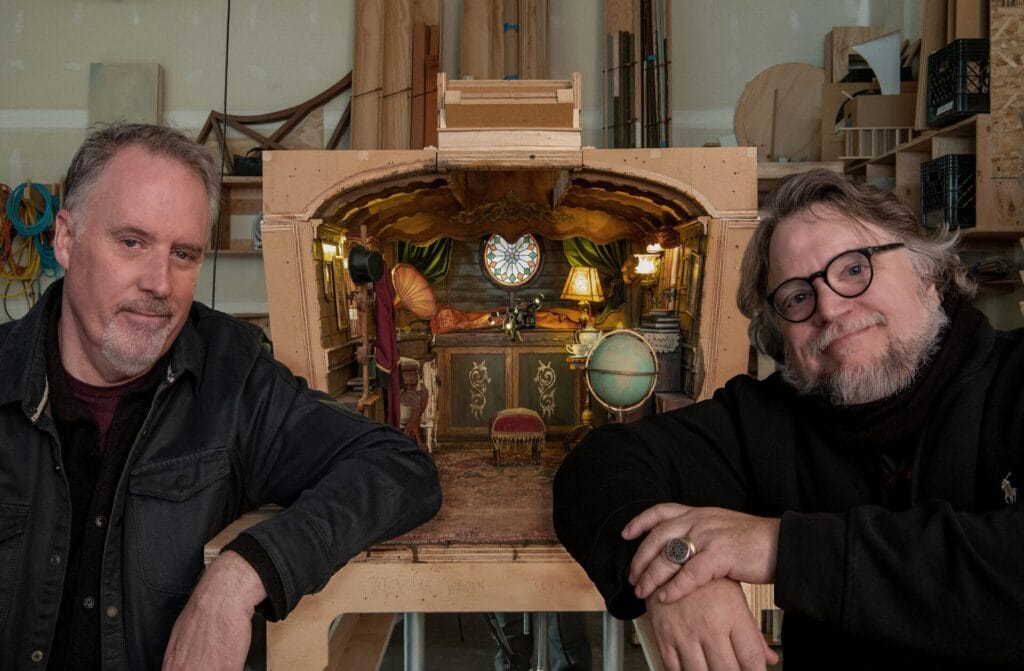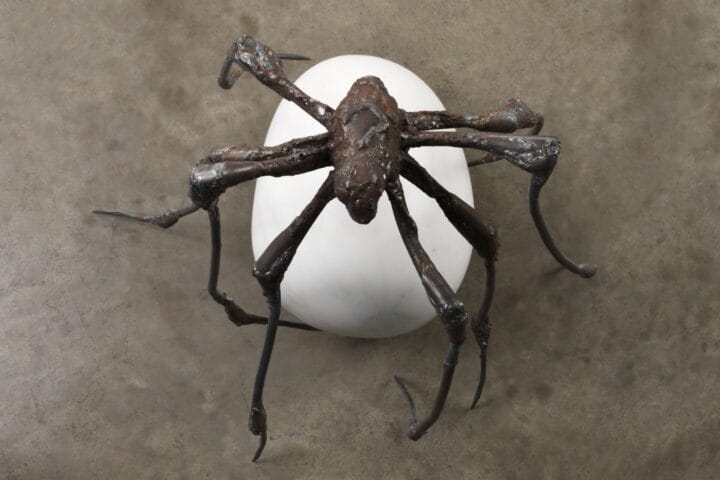
NEW YORK, November 2, 2022—The Museum of Modern Art presents Guillermo del Toro: Crafting Pinocchio, an exhibition devoted to the craft and process behind the celebrated filmmaker’s first stop-motion animation film. On view in the second-floor Paul J. Sachs Galleries and in the Debra and Leon Black Family Film Center from December 11, 2022, through April 15, 2023, the exhibition will provide visitors with a behind-the-scenes look at the handcrafted creative process to realize del Toro’s latest film, Guillermo del Toro’s Pinocchio (2022). In addition to the gallery presentations, MoMA will screen Guillermo del Toro’s Pinocchio on select days between December 3 and 11, along with a theatrical run from December 26 through January 4; present a complete retrospective of del Toro’s films, from January 4 through 29; and host a Carte Blanche film series, curated by the director, in March 2023, all in the Roy and Niuta Titus Theaters. Guillermo del Toro: Crafting Pinocchio is organized by Ron Magliozzi, Curator, and Brittany Shaw, Curatorial Assistant, with Kyla Gordon, Research Assistant, Department of Film.
“With Guillermo del Toro’s Pinocchio, we had the unique opportunity to organize an exhibition during the active production of a feature film by one of this generation’s most important filmmakers,” says curator Ron Magliozzi. “The chance to observe firsthand how Guillermo and fellow director Mark Gustafson engaged with the craftspeople and artists on their team inspired our selection and installation of the works on display.”
Guillermo del Toro: Crafting Pinocchio will invite visitors to explore the collaborative craft of stop-motion animation filmmaking, from look development to the years-long production process, through a presentation of five full working sets and four large set pieces, alongside puppets and marionettes, maquettes, sculptural molds, drawings, development materials, time-lapse and motion-test videos, digital color tests, archival photography, and props from the film. Photographs of the 375 crew members from Shadow Machine in Portland, Oregon; Taller del Chucho in Guadalajara, Mexico; and McKinnon & Saunders in Altrincham, England, all of whom worked together under del Toro’s direction to bring the reimagined classic to life, will also be on display.

The exhibition will open on the second-floor galleries with a scene-setting display of three classical and contemporary editions of Carlo Collodi’s book The Adventures of Pinocchio (1883) from Italy and the United States, including the 2002 edition illustrated by Gris Grimly, which inspired the filmmakers. It features an installation of oversized pizza boxes, which were used during the production of the film to store hundreds of 3D-printed Pinocchio faces, approximately 300 of which will be on view. The opening gallery also presents a time-lapse video of an animator at work using stop-motion photography to shoot a Pinocchio puppet being tossed in a wave, contextualized with real-life examples of the multiple Pinocchio puppets used during filming and a fully disassembled version to display all of the puppet’s components.
The first section of the exhibition, titled “Look Development,” will center on the research and experimentation done by the production team to create the natural elements that made up the film’s world and inspired the appearances of each character. This gallery will include the historical and topographical models for Pinocchio’s village, lifelike studies of wood and stone elements, and a number of archival photographs used as references to ground the animation in historical reality. This adaptation of Pinocchio is reimagined to be set in 1930s Italy, with fascism on the rise. The pairing of the work “Loading Dock ‘M’ Gate” on view in this gallery, with an untitled archival photograph from 1934, depicting the giant “M” installed to meet Fascist politician Benito Mussolini’s arrival in a small Italian village, highlights historical source material that informed the production team. This gallery will also introduce examples of all of the finished puppets from the film, paired with look- development maquettes in varying stages of the process, such as the silicone and resin castings of vegetables that provided inspiration for the character Dogfish’s monstrous skin, texture, and scarring.

The second section of the exhibition, “On the Set,” will open with a “Production Scheduling Board” and feature eight sets from the production of Guillermo del Toro’s Pinocchio. This installation will continue the exploration of the studio process, highlighting the attention to detail given to each of the sets—a testament to the handcrafted process of stop-motion filmmaking. Of particular note are the stained-glass windows and frescoes on the walls of the “Church Corner” set that reference both Guillermo del Toro’s Pinocchio and his other films. Animation work screens and time-lapse video recordings interspersed in these galleries will give visitors behind-the-scenes insight into how animators use live-action video and stop-motion animation to bring scenes to life.
Visitors will make the transition from the second-floor galleries to the Museum’s ground floor, where Guillermo del Toro: Crafting Pinocchio continues with the largest Pinocchio puppet. “Oversized Pinocchio,” made up of a head and torso measuring approximately 5′ 8″ (172.2 cm), which was used to film closeups of the characters Pinocchio and Cricket, will
be suspended from the ceiling. This large-scale hanging puppet will be accompanied by a look-development study of the “Branch Nose Bridge” maquette, crafted from cardboard and masking tape, which visitors can experience before they descend the escalators to the final gallery spaces of the exhibition.
Guillermo del Toro: Crafting Pinocchio will conclude in the Black Family Film Center gallery spaces with a final presentation of props and materials from Guillermo del Toro’s Pinocchio, including the annotated pages from the films original musical score by composer Alexandre Desplat, a “Cricket under oversized glass and hammer” prop, and a display of 24 distinctively illustrated editions of Pinocchio from eight countries, dating from 1898 to 2020. Three newly commissioned video essays by filmmaker Javier Soto will explore motifs that are frequently addressed in del Toro’s films: the monstrous, spaces on screen, and mortality. These galleries will also display a selection of original studio-edition posters and alternative posters designed by pop artists for the 12 feature films directed by del Toro, along with a site-specific soundscape that will feature acoustic references to the director’s films, by sound editor and designer Nathan Robitaille.
Guillermo del Toro: Crafting Pinocchio is the Museum’s fourth major gallery exhibition to focus on the art of motion picture animation since 2005, following Pixar: 20 Years of Animation (2005–06), Tim Burton (2009), and Quay Brothers: On Deciphering the Pharmacist’s Prescription for Lip-Reading Puppets (2012). Del Toro’s work has appeared in several of the Museum’s exhibitions, starting in 1994, when his first film, Cronos (1993), was selected for the annual New Directors/New Films festival. Since then, the Museum has screened The Shape of Water (2017) as a part of The Contenders 2017 and Nightmare Alley (2021) as a part of The Contenders 2021.
Following its presentation at MoMA, Guillermo del Toro: Crafting Pinocchio will travel to the Portland Art Museum (June–September 2023).

2022 FILM SCREENING SCHEDULE:
The Contenders 2022: Guillermo del Toro’s Pinocchio. 2022. Directed by Guillermo del Toro, Mark Gustafson. Screenplay by del Toro, Patrick McHale, Matthew Robbins. 114 min. Saturday, December 3, 2:00 p.m.
MoMA Presents: Guillermo del Toro’s Pinocchio. 2022. Directed by Guillermo del Toro, Mark Gustafson. Screenplay by del Toro, Patrick McHale, Matthew Robbins. 114 min.
Sunday, December 4, 4:30 p.m.
Monday, December 5, 6:30 p.m.
Wednesday, December 7, 6:30 p.m.
Saturday, December 10, 2:00 p.m.
Sunday, December 11, 5:00 p.m.
Monday, December 26–Friday, December 30, 3:00 p.m.
Saturday, December 31, 1:30 p.m.
Sunday, January 1, 3:00 p.m.
Monday, January 2, 7:00 p.m.
Tuesday, January 3, 4:00 p.m.
Wednesday, January 4, 4:00 p.m.
Guillermo del Toro: Tales of Mourning and Imagination
In conjunction with Guillermo del Toro: Crafting Pinocchio, a complete retrospective of del Toro’s 12 feature films—Cronos (1993), Mimic (1997), The Devil’s Backbone (2001), Blade
II (2002), Hellboy (2004), Pan’s Labyrinth (2006), Hellboy II: The Golden Army (2008), Pacific Rim (2013), Crimson Peak (2015), The Shape of Water (2017), Nightmare Alley (2021), and Guillermo del Toro’s Pinocchio (2022)—will be screened from January 4 through 29, 2023, in the Museum’s Roy and Niuta Titus Theaters.
A full screening schedule for the 2023 film programs that will accompany Guillermo del Toro: Crafting Pinocchio will be announced this winter.
AUDIO TOUR:
Presenting excerpts of exclusive interviews conducted by Netflix during the film’s production, the exhibition’s audio playlist offers a behind-the-scenes look at the making of Guillermo del Toro’s Pinocchio. Hear from a variety of cast and crew members, including the film’s directors, Guillermo del Toro and Mark Gustafson, as well, animators, production designers, puppet makers, and many others. Stories range from in-depth explorations of the puppet making process to descriptions of “easter eggs” hidden throughout the film and reflections on how the film’s craftspeople overcame the unique challenges of stop motion animation.
The Museum of Modern Art
11 W 53rd St, New York, NY 10019











